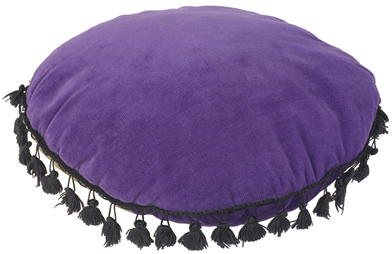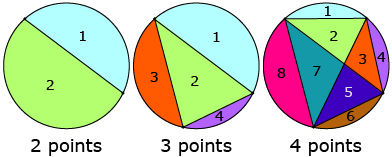Lesson 2
1. Lesson 2
1.4. Explore 4
Module 2: Logic and Geometry

PhotoObjects.net/Thinkstock
Try This 1
Vicky is working on a design for a quilted circular pillow. In her design, she is marking points on the circumference of the circle and then joining the points with line segments ![]() or chords
or chords ![]() to create regions. She is trying to determine how many different types of fabric she will need to cover the pillow top if each region is to be a different colour or pattern of fabric.
to create regions. She is trying to determine how many different types of fabric she will need to cover the pillow top if each region is to be a different colour or pattern of fabric.
As she is drawing her sketch of the circular pillow design, she notices the pattern shown in the following sketch.

- Based on Vicky’s sketch, make a conjecture about the relationship between the numbers of regions created within the circle and the number of points on the circumference of the circle.
- Use the Circle Conjecture applet to test the validity of your conjecture. As you test the conjecture, consider the following questions:
Share 3
Share your findings from Try This 1 with another student or appropriate partner either in person or virtually. Use the following questions to guide your discussion.
- Explain the conjecture you developed for the relationship between the number of regions created within the circle and the number of points on the circumference of the circle.
- Present your opinion on the amount of examples or evidence required to test the conjecture. How does it compare with your partner's opinion?
- Identify a counterexample, if applicable. What does this tell you about your conjecture?
a line segment with endpoints on a curve
a part of a line between two endpoints along the line
